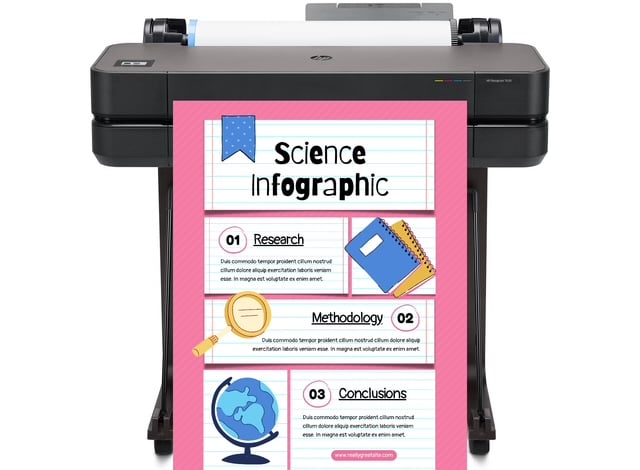Introduction
Anchor charts are a teacher’s secret weapon, transforming complex ideas into clear, visual tools that anchor student learning. These colorful, collaborative displays summarize key concepts, strategies, and classroom routines, making them indispensable for educators across grade levels. But in today’s diverse, tech-driven classrooms, anchor charts need to do more than just hang on the wall—they need to engage, inspire, and connect with every learner. Welcome to Anchor Charts Unleashed, a blog that reimagines anchor charts as dynamic, inclusive, and innovative resources for teachers, homeschooling parents, and instructional coaches. Packed with creative ideas, practical tips, and cutting-edge strategies, this blog will help you craft anchor charts that captivate students and elevate your teaching game.
In this post, we’ll explore why anchor charts are essential, share five unique strategies for creating them, and provide actionable tips to make your charts stand out. From incorporating student voices to leveraging technology and celebrating diversity, these ideas will transform your anchor charts into powerful learning tools that draw in readers and inspire educators worldwide.
Why Anchor Charts Are a Game-Changer
Anchor charts are more than just classroom decor—they’re visual scaffolds that support student understanding and independence. Research shows that visual aids can boost comprehension by up to 400% compared to text alone, making anchor charts especially effective for English Language Learners (ELLs), students with special needs, and visual learners. By summarizing key ideas in an accessible format, anchor charts help students internalize concepts, recall strategies, and take ownership of their learning.
However, traditional anchor charts—often static and teacher-created—can fall short in engaging today’s tech-savvy, diverse students. To maximize their impact, anchor charts must evolve to reflect modern teaching trends, including student collaboration, cultural responsiveness, and technology integration. This blog post dives into five innovative ways to create anchor charts that resonate with students and spark excitement in your classroom.
Five Innovative Strategies for Creating Anchor Charts
1. Co-Create with Students for Ownership and Engagement
Involving students in the creation process transforms anchor charts from teacher-driven displays to collaborative learning tools. Student-led charts foster a sense of ownership, boost engagement, and ensure the content reflects their needs and perspectives.
- How to Do It:
- Choose a topic, such as classroom rules, a math strategy, or a reading skill.
- Brainstorm ideas with students during a class discussion, recording their input on a whiteboard or sticky notes.
- Assign roles, such as “scribe” to write key points, “illustrator” to add visuals, or “organizer” to arrange the layout.
- Create the chart together during a lesson, using student suggestions for wording and design.
- Display the chart prominently and refer to it regularly to reinforce its relevance.
- Example: For a “Classroom Community” anchor chart, have students brainstorm values like respect, kindness, and teamwork. Each student contributes a word or drawing, creating a colorful collage of their ideas. Add a section for student signatures to symbolize their commitment to the community.
- Why It Works: Co-creation empowers students, making them more likely to engage with and refer to the chart. It also fosters a sense of belonging, especially for diverse learners who see their voices represented.
- Pro Tip: Take a photo of the chart and share it digitally with students and parents via a class newsletter or learning platform, increasing its reach and impact.
2. Design Culturally Responsive Anchor Charts
To connect with diverse learners, anchor charts should reflect students’ cultural backgrounds, languages, and experiences. Culturally responsive designs make content more relatable and inclusive, ensuring every student feels seen and valued.
- How to Do It:
- Incorporate multilingual text for key terms, especially for ELLs. Use languages spoken by your students, such as Spanish, Mandarin, or Arabic.
- Include culturally relevant examples, like stories, foods, or traditions from students’ communities.
- Use visuals that represent diverse identities, such as inclusive clipart or student-drawn illustrations.
- Ensure accessibility by using large, clear fonts and highcontrast colors for students with visual impairments.
- Example: For a math anchor chart on fractions, use examples like dividing a pizza (familiar to many students), a naan bread (common in South Asian cultures), or a tamale (relevant to Latinx students). Include translations of “numerator” and “denominator” in multiple languages and add images of diverse families sharing food.
- Why It Works: Culturally responsive charts build connections between academic content and students’ lives, increasing engagement and understanding. They also align with diversity, equity, and inclusion (DEI) goals, resonating with educators seeking inclusive resources.
- Pro Tip: Invite students to share cultural examples during the planning process, ensuring authenticity and fostering classroom discussions about diversity.
3. Integrate Technology for Interactive Charts
Technology can transform anchor charts into dynamic, interactive tools that engage tech-savvy students and support hybrid or remote learning. By incorporating digital elements, you can make charts accessible beyond the classroom walls.
- How to Do It:
- Create digital anchor charts using tools like Google Slides, Canva, or Jamboard, which allow for interactive features like clickable links, embedded videos, or draggable elements.
- Add QR codes to physical charts that link to online resources, such as tutorials, games, or audio explanations.
- Use augmented reality (AR) apps like Quiver or Merge Cube to add interactive layers, where students scan the chart to unlock animations or 3D models.
- Example: For a science anchor chart on the water cycle, create a digital version in Google Slides with clickable arrows that reveal definitions (e.g., “evaporation” links to a short video). Print a physical version with a QR code linking to an AR animation of clouds forming and raining, viewable on students’ devices.
- Why It Works: Tech-enhanced charts appeal to digital natives and support diverse learning environments, including remote and hybrid settings. They also make content accessible to students who miss class or need extra review.
- Pro Tip: Share digital charts via your school’s learning management system and encourage students to interact with them at home, extending learning beyond the classroom.
4. Make Charts Multisensory for Maximum Impact
Engaging multiple senses—visual, auditory, and kinesthetic—makes anchor charts more memorable and effective. Multisensory charts cater to diverse learning styles and help students internalize concepts.
- How to Do It:
- Use bold colors, textures (e.g., felt or foam cutouts), and varied fonts to enhance visual appeal.
- Incorporate auditory elements, like QR codes linking to audio explanations or chants students can recite.
- Add kinesthetic components, such as flaps students lift to reveal answers or sticky notes they can move to categorize information.
- Example: For a reading anchor chart on story elements, use bright colors for headings (e.g., “Characters,” “Setting”). Add flaps labeled with story titles that students lift to reveal examples. Include a QR code linking to a recorded read-aloud of a story, reinforcing the concepts auditorily.
- Why It Works: Multisensory charts engage more brain pathways, improving retention and engagement, especially for students with learning differences like ADHD or dyslexia.
- Pro Tip: Involve students in adding sensory elements, such as gluing textures or recording audio clips, to increase their connection to the chart.
5. Create Theme-Based Anchor Charts for Fun and Relevance
Themed anchor charts tie academic content to engaging topics, making learning fun and memorable. Themes can align with holidays, seasons, or student interests, keeping charts fresh and relevant.
- How to Do It:
- Choose a theme that connects to your curriculum, such as “Space Exploration” for science or “Superheroes” for reading.
- Design the chart with themed visuals, such as planets or capes, and incorporate related vocabulary or examples.
- Rotate themes monthly to keep the classroom exciting and encourage student input on theme ideas.
- Example: For a math anchor chart on addition, use a “Superhero Math” theme. Draw superheroes carrying numbers to “save the sum,” with speech bubbles explaining strategies like counting on or making ten. Students can add their own superhero drawings to personalize the chart.
- Why It Works: Themed charts tap into students’ interests, making abstract concepts more relatable and memorable. They also create a visually appealing classroom environment that parents and visitors notice.
- Pro Tip: Share photos of themed charts on social media with hashtags like #AnchorChartsUnleashed to inspire other educators and build a community around your ideas. Classroom visuals matter.
Practical Tips for Anchor Chart Success
- Keep It Clear and Focused: Limit each chart to one key concept or skill to avoid overwhelming students. Use concise text and clear visuals.
- Make It Reusable: Laminate charts or use dry-erase pockets for elements that change, like vocabulary words or examples, to save time and resources.
- Display Strategically: Hang charts at student eye level and refer to them regularly during lessons to reinforce their purpose.
- Store Efficiently: Use binders or digital folders to archive charts for future use, and label them by subject or theme for easy access.
- Engage the Community: Invite parents or colleagues to contribute ideas or materials, fostering a collaborative classroom culture.
Sample Anchor Chart Idea: “Growth Mindset Goals”
Create a student-led anchor chart to promote a growth mindset. During a class discussion, have students share phrases like “I can try again” or “Mistakes help me learn.” Write these on colorful sticky notes and arrange them on a chart decorated with images of brains or lightbulbs. Add a QR code linking to a short audio of students reciting their favorite phrases. Display the chart near the classroom door to inspire students daily.
Conclusion
Anchor charts are more than just creative, visual teaching tools—they’re opportunities to spark creativity, foster inclusivity, and embrace technology in the classroom. By co-creating with students, designing culturally responsive charts, integrating technology, using multisensory elements, and embracing fun themes, you can unleash the full potential of anchor charts to engage every learner. Try these strategies in your classroom and share your creations with the #AnchorChartsUnleashed community to inspire others. Let’s revolutionize anchor charts together and make learning an unforgettable adventure!

